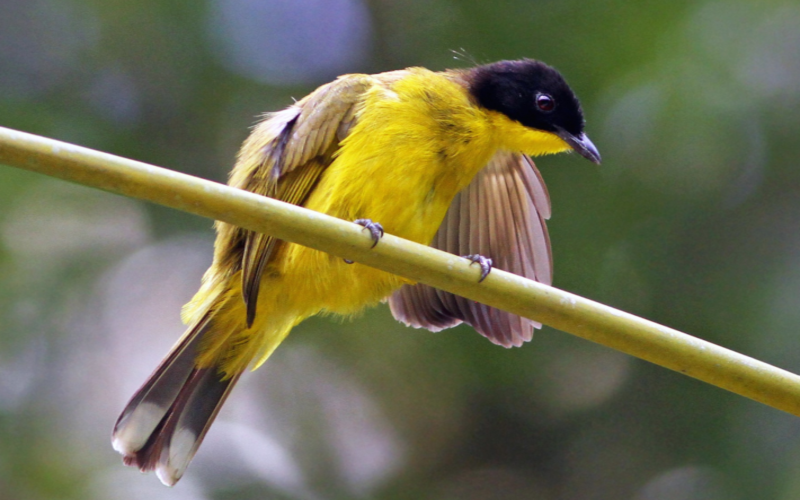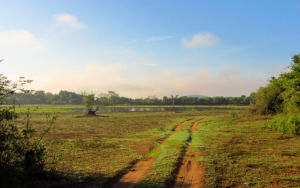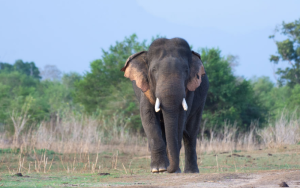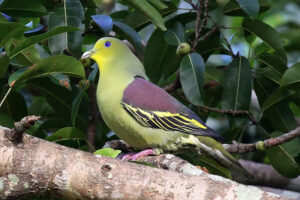Introduction of Black-Capped Bulbul
The Sri Lanka Black-capped Bulbul is a small bird species that are endemic to Sri Lanka, an island country located in South Asia. This bird species belongs to the family Pycnonotidae, which includes bulbuls. The Black-capped Bulbul is known for its unique features and distinctive call that make it a popular bird among birdwatchers and nature enthusiasts. In this article, we will discuss the key features of the Sri Lanka Black-capped Bulbul, it’s habitat, behavior, diet, breeding, and conservation status.
Physical Description of Black-Capped Bulbul
The Sri Lanka Black-capped Bulbul is a small bird species with an average length of 19 cm and a weight of 25 grams. Its head, throat, and upper breast are black in color, while the rest of its body is gray-brown. The eyes are dark brown, and the beak and legs are black. The tail is relatively long and has white tips. The male and female have similar physical features, and there is no significant sexual dimorphism.
Habitat of Black-Capped Bulbul
The Sri Lanka Black-capped Bulbul is an endemic bird species to Sri Lanka and is mainly found in the wet zone forests of the island. It is most commonly found in the hill country, particularly in the areas with dense vegetation, such as rainforests and montane forests. The bird prefers to live in the upper canopy of the forest and is rarely seen on the ground. The Sri Lanka Black-capped Bulbul has a limited distribution, and its population is declining due to the loss of its habitat caused by deforestation, logging, and land-use changes.

Where Can Find of Black-Capped Bulbul
- Kitulgala Forest Reserve
- The Peak Wilderness Sanctuary
- Bodhinagala Forest
- Morapitiya Forest Reserve
- Sinharaja Rain Forest
- Hiyare Forest Reserve
- Udawalawe National Park
- Wasgamuwa National Park
Behavior of Black-Capped Bulbul
The Sri Lanka Black-capped Bulbul is an active and social bird species that live in small groups. The bird is diurnal, meaning it is most active during the day. It is a fast and agile flyer that moves quickly through the forest canopy. The bird has a distinctive call that is a series of short, sharp notes that sound like “chink-chink.” The call is loud and can be heard from a distance, making it easier to locate the bird in the forest. The bird is not migratory and does not move outside its habitat range.

Diet
The Sri Lanka Black-capped Bulbul is an omnivorous bird species that feed on a variety of food items. The bird’s diet mainly consists of fruits, insects, and small invertebrates. It is also known to feed on nectar from flowers. The bird feeds primarily in the upper canopy of the forest, where it can find a variety of food items. The bird plays an important role in seed dispersal, particularly for fruit-bearing trees in the forest.
Breeding
The breeding season of the Sri Lanka Black-capped Bulbul is from March to June. During this period, the bird becomes more vocal and active in its mating behavior. The bird builds its nest in the dense foliage of trees, usually at a height of 2-6 meters from the ground. The nest is a cup-shaped structure made of plant materials, such as twigs, grass, and leaves, and is lined with finer materials such as fur or feathers. The female lays 2-3 eggs, which are incubated for 14-15 days. Both the male and female share the responsibilities of incubation and feeding the chicks.
Conservation Status
The Sri Lanka Black-capped Bulbul is listed as a vulnerable species on the IUCN Red List of Threatened Species. The bird population is declining due to habitat loss caused by deforestation, logging, and land-use changes. The bird’s habitat is also fragmented due to human activities, making it difficult for the bird to move between the forest patches. The Sri Lanka Black-capped Bulbul is also hunted for its meat and feathers, which further contributes to its declining population. The Sri Lankan government has taken several steps to protect the bird’s habitat, including the establishment of protected areas and the implementation of conservation programs.
In addition to government efforts, several non-governmental organizations are working towards the conservation of the Sri Lanka Black-capped Bulbul. The BirdLife International Partnership, for instance, has identified the bird as a priority species for conservation and has initiated several programs to protect its habitat.
Apart from habitat conservation, public awareness campaigns and education programs are also necessary to protect the Sri Lanka Black-capped Bulbul. Such programs can help raise awareness about the importance of conserving the bird and their habitat and can encourage people to take action to protect them.
Conclusion
In conclusion, the Sri Lanka Black-capped Bulbul is a unique and fascinating bird species that are endemic to Sri Lanka. Its distinctive features, behavior, and call make it a popular bird among birdwatchers and nature enthusiasts. However, the bird is facing numerous threats, including habitat loss, fragmentation, and hunting. It is therefore crucial that concerted efforts are made to protect the bird and its habitat. Government initiatives, NGO conservation programs, and public awareness campaigns can all contribute to the conservation of this vulnerable bird species, ensuring that it continues to thrive for generations to come.











